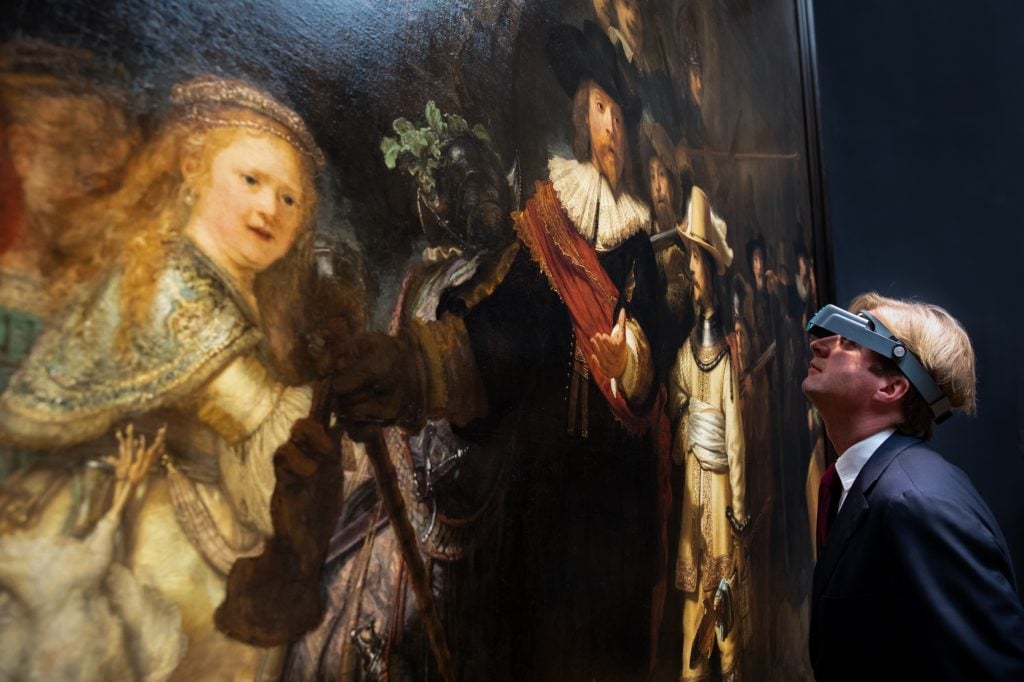On View
Rembrandt’s Monumental Masterpiece the ‘Night Watch’ Will Be Restored—and You Can Watch It Happen
If you ever wondered how masterpieces are restored, now you can find out for yourself.

If you ever wondered how masterpieces are restored, now you can find out for yourself.

Henri Neuendorf

One of Rembrandt’s most famous and ambitious paintings, the Night Watch (1642) will undergo an ambitious restoration next year—right in public view. Beginning July 2019, the Dutch master’s monumental group portrait will be conserved over a number of years at the Rijksmuseum Museum in Amsterdam. Experts will work on the painting inside a specially-designed glass chamber. The entire process will be visible to the public and streamed online (an increasingly trendy approach to restoration).
The painting, thought to be one of Rembrandt’s greatest, was commissioned by members of Amsterdam’s civic guard led by Captain Frans Banninck Cocq and Lieutenant Willem van Ruytenburch. Rather than create a static portrait, Rembrandt chose to paint the militia in motion. The Night Watch has been the centerpiece of the Rijksmuseum’s collection since 1808, and is seen by an estimated 2.2 million people every year.
Speaking to the New York Times, the museum’s director Taco Dibbits called the undertaking its “biggest conservation and research project ever” and estimated it would cost in the millions of dollars.
Museum conservators who regularly monitor the work say they have observed significant changes in its condition over the years, including the blanching of a dog in the lower right hand side of the canvas.
The Night Watch was last restored in 1976 after a visitor vandalized it with a bread knife. Conservators were able to repair Rembrandt’s masterpiece after the attack—but 40 years later, the retouching has started to yellow and needs to be redone.
According to the Times, conservators will spend the first eight months conducting a series tests to examine the work with state-of-the-art computer technology such as macro x-ray fluorescence scanning, which allows researchers to evaluate individual paint layers.
Dibbits noted that contemporary technology presents an opportunity for researchers to uncover previously unknown information about the celebrated masterwork. “There are many mysteries of the painting that we might solve,” he said. “We actually don’t know much about how Rembrandt painted it. With the last conservation, the techniques were limited to basically X-ray photos and now we have so many more tools. We will be able to look into the creative mind of one of the most brilliant artists in the world.”
Most importantly, years from now when the restoration is completed, the painting will have a new lease on life. “You will be able to see much more detail, and there will be areas of the painting that will be much easier to read,” Dibbits said.